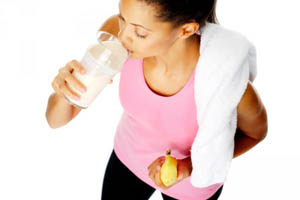Mar 20: A new study has suggested that women should follow a high-protein meal with half an hour of moderate exercise as it burns more calories as compared to exercising on an empty stomach.
 Ashley Binns, a doctoral student in kinesiology and exercise science who led the study at the University of Arkansas, said the goal was to determine the interaction between the thermic effect of food and exercise on the body's total energy expenditure, as measured in calories.
Ashley Binns, a doctoral student in kinesiology and exercise science who led the study at the University of Arkansas, said the goal was to determine the interaction between the thermic effect of food and exercise on the body's total energy expenditure, as measured in calories.
Thermic effect is the amount of energy that it takes to digest, store and utilize the food we eat.
Binns said that her team looked at the effects of protein consumption alone on total energy expenditure and protein consumption combined with exercise, and found that with exercise, there is a trend for a continued increase in caloric expenditure with higher protein consumption.
Additionally, the consumption of the high- or low-protein meals resulted in greater energy expenditure than the fasted state, she said.
"That means that eating prior to exercise does provide fuel to burn, making us more like an energy-burning machine," she asserted.
Ten "recreationally active" college-age women of normal body weight participated in the study. For their testing sessions, they were given a high-protein meal, low-protein meal, or no food at all, before walking on a treadmill.
Binns said that previous studies involving high- and low-protein diets have typically examined the athletic populations and morbidly obese individuals, but she wanted to see what the thermic effect of food was like for a normal individual, who didn't have any metabolic disorders or medications that would affect their metabolism.
Exercise was key to the study, Binns said, because high-protein diets without exercise can lead to muscle loss.
With just a high-protein diet and no exercise, the body heats up to break down the protein but what also happens is it breaks down muscle, she said.
The study has been published in the Journal of Science and Medicine in Sport.





Comments
Add new comment